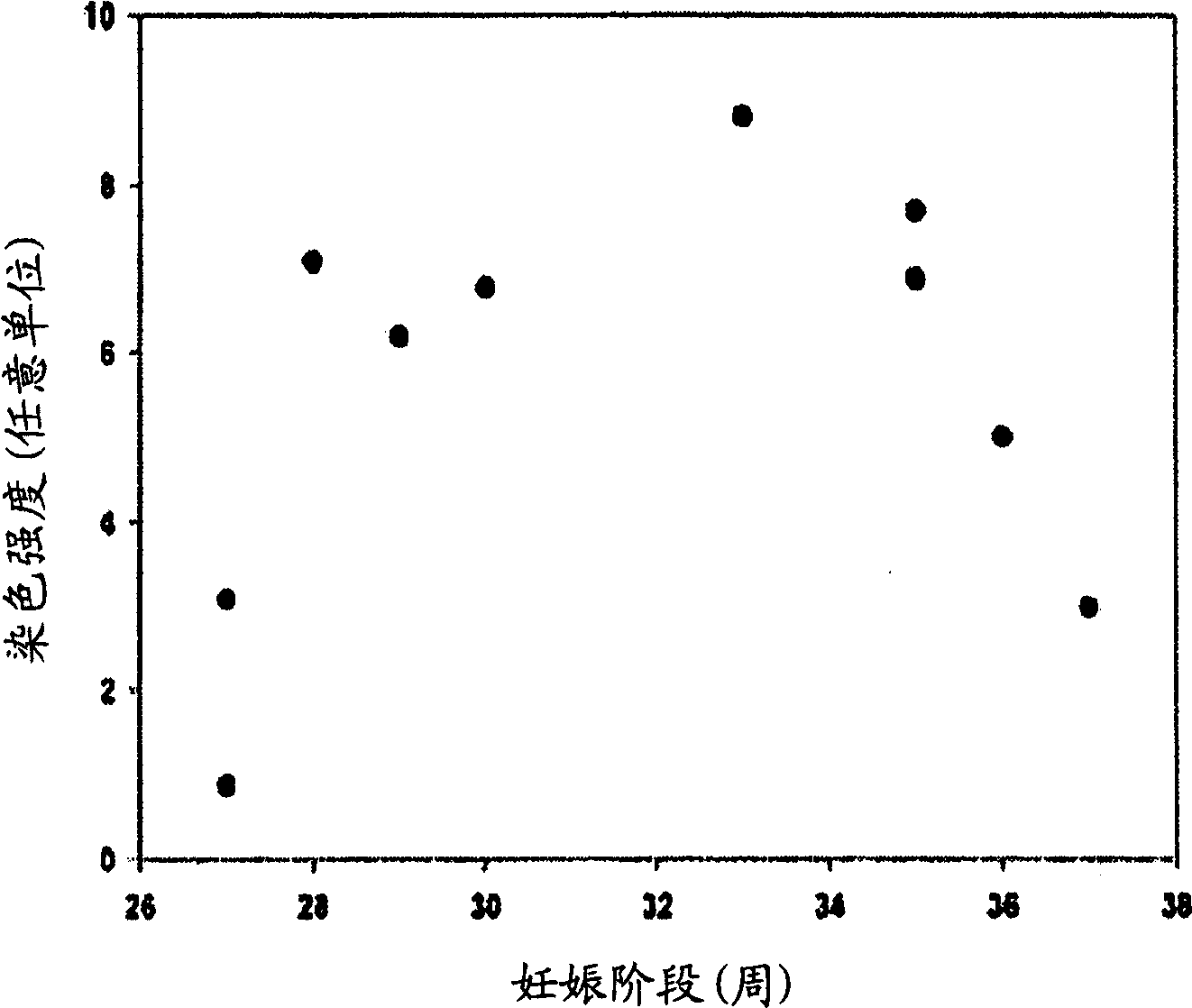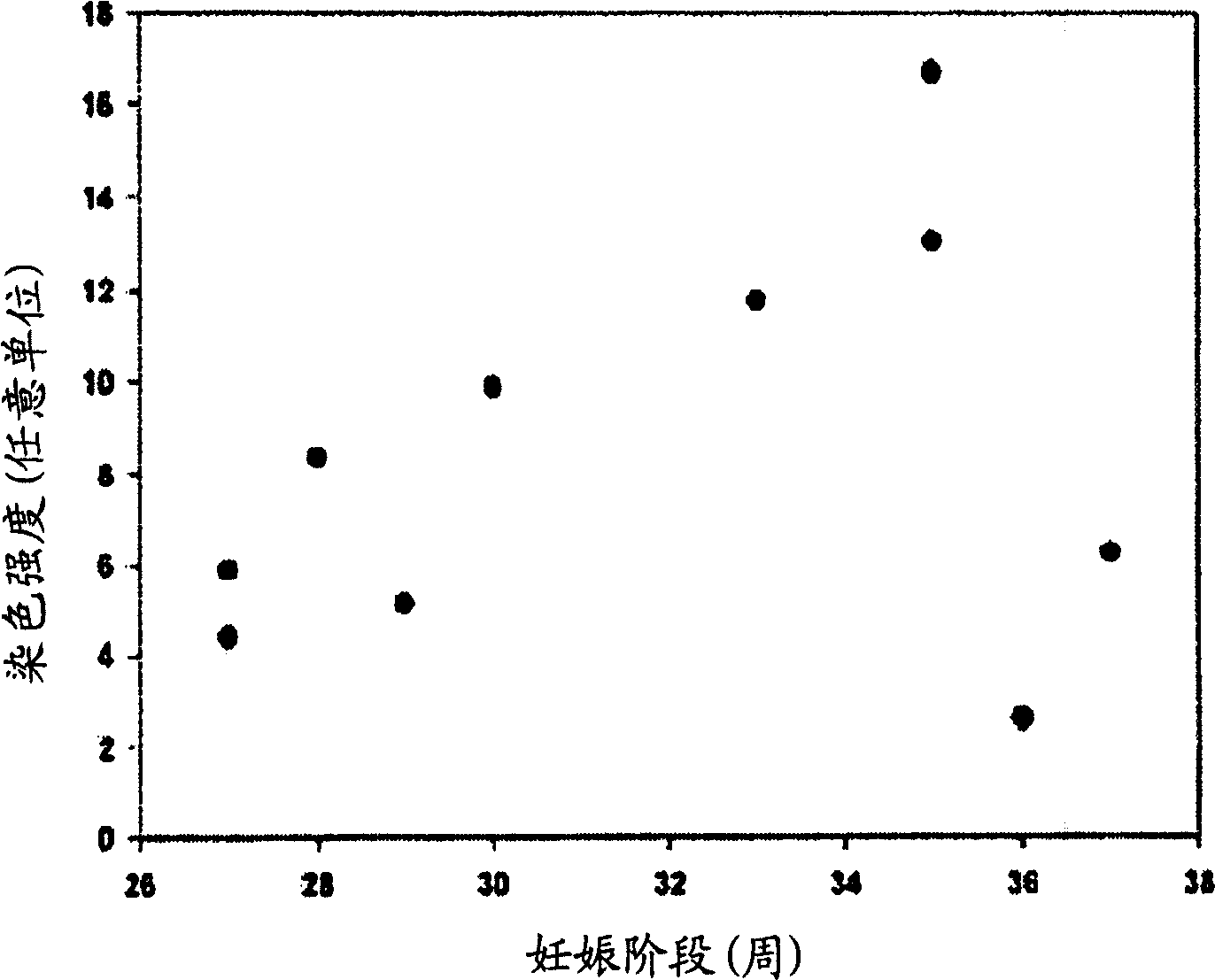Methods and kits for predicting risk for preterm labor
A kit and risk technology, applied in the field of predicting premature cervical softening, can solve the problem of impossible identification of cervical softening, deficiency, etc.
Inactive Publication Date: 2009-08-19
CERVIMARK
View PDF0 Cites 10 Cited by
- Summary
- Abstract
- Description
- Claims
- Application Information
AI Technical Summary
Problems solved by technology
The lack of experimental systems makes it impossible to identify key molecular markers of cervical softening and to construct suitable diagnostic kits
Method used
the structure of the environmentally friendly knitted fabric provided by the present invention; figure 2 Flow chart of the yarn wrapping machine for environmentally friendly knitted fabrics and storage devices; image 3 Is the parameter map of the yarn covering machine
View moreImage
Smart Image Click on the blue labels to locate them in the text.
Smart ImageViewing Examples
Examples
Experimental program
Comparison scheme
Effect test
Embodiment 1
Embodiment 2
Embodiment 3
the structure of the environmentally friendly knitted fabric provided by the present invention; figure 2 Flow chart of the yarn wrapping machine for environmentally friendly knitted fabrics and storage devices; image 3 Is the parameter map of the yarn covering machine
Login to View More PUM
 Login to View More
Login to View More Abstract
The invention is directed to kits and methods that allow one to predict the risk for preterm labor in a pregnant woman. The inventors have discovered that various extracellular matrix components can be detected in cervical secretions. The quantification of certain extracellular matrix proteins found within cervical secretions can be used as a diagnostic for the biomechanical state of the cervix, which indicates whether preterm labor is likely. Some extracellular matrix components that can be found in cervical secretions include decorin, thrombospondins and matrix metalloproteinases.
Description
[0001] Cross References to Related Applications [0001] This application is a (non-US) National Patent Application related to US Patent Application 11 / 874,717, filed October 18,2007. Background technique (1) technical field [0002] The present invention relates generally to the diagnosis of an increased risk of preterm birth during pregnancy. More specifically, the present invention relates to methods and kits for predicting premature cervical softening. (2) Description of related technologies [0003] Preterm birth, and the subsequent delivery of preterm infants, remains a leading cause of infant mortality and morbidity, as well as a heavy economic burden on society. Preterm softening of the cervix during pregnancy results in dilation (opening) and loss (thinning) of the preterm cervix and puts the pregnant woman at high risk for preterm birth. There is currently no diagnostic method for predicting cervical preterm dilatation and, therefore, high risk of preterm bi...
Claims
the structure of the environmentally friendly knitted fabric provided by the present invention; figure 2 Flow chart of the yarn wrapping machine for environmentally friendly knitted fabrics and storage devices; image 3 Is the parameter map of the yarn covering machine
Login to View More Application Information
Patent Timeline
 Login to View More
Login to View More Patent Type & Authority Applications(China)
IPC IPC(8): G01N33/53C12Q1/68
CPCG01N2800/50G01N2800/368G01N2800/60G01N33/689A61P43/00G01N33/48G01N33/487G01N33/49G01N33/53
Inventor R·科肯耶西J·赖
Owner CERVIMARK
Features
- R&D
- Intellectual Property
- Life Sciences
- Materials
- Tech Scout
Why Patsnap Eureka
- Unparalleled Data Quality
- Higher Quality Content
- 60% Fewer Hallucinations
Social media
Patsnap Eureka Blog
Learn More Browse by: Latest US Patents, China's latest patents, Technical Efficacy Thesaurus, Application Domain, Technology Topic, Popular Technical Reports.
© 2025 PatSnap. All rights reserved.Legal|Privacy policy|Modern Slavery Act Transparency Statement|Sitemap|About US| Contact US: help@patsnap.com



